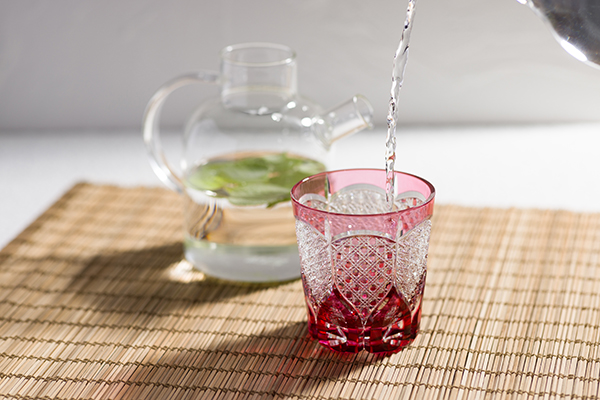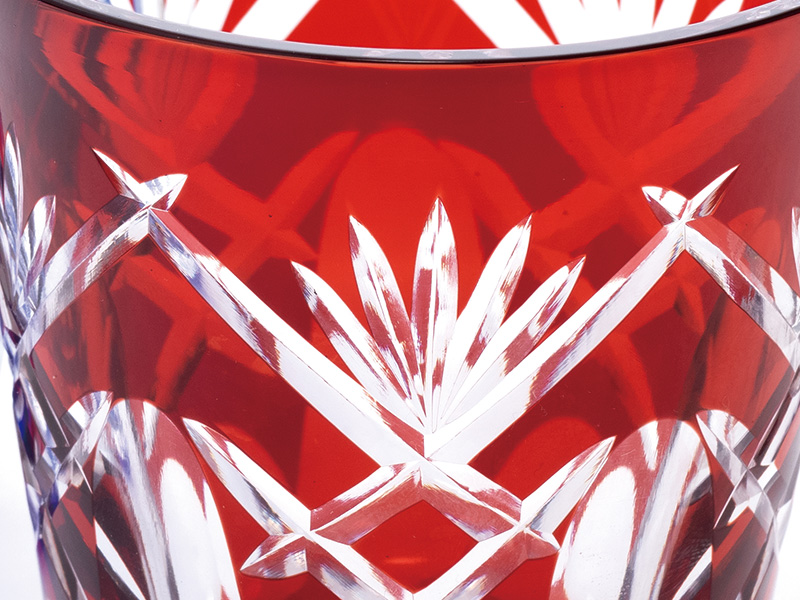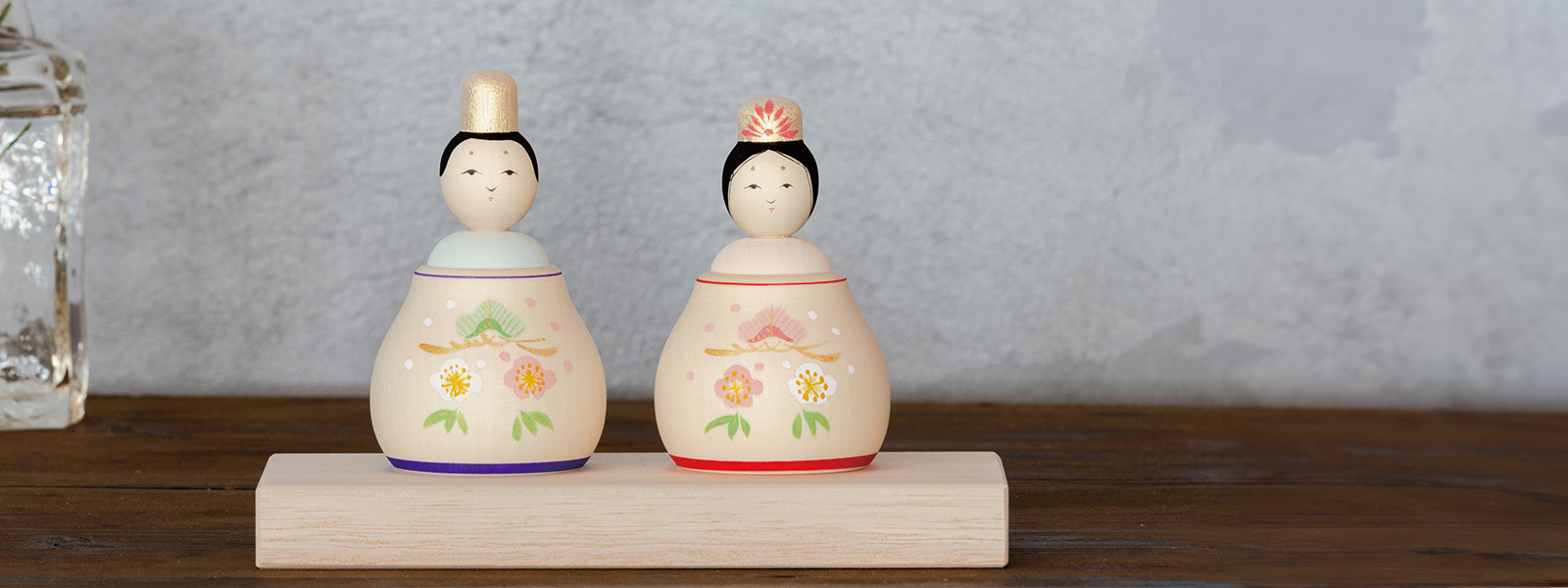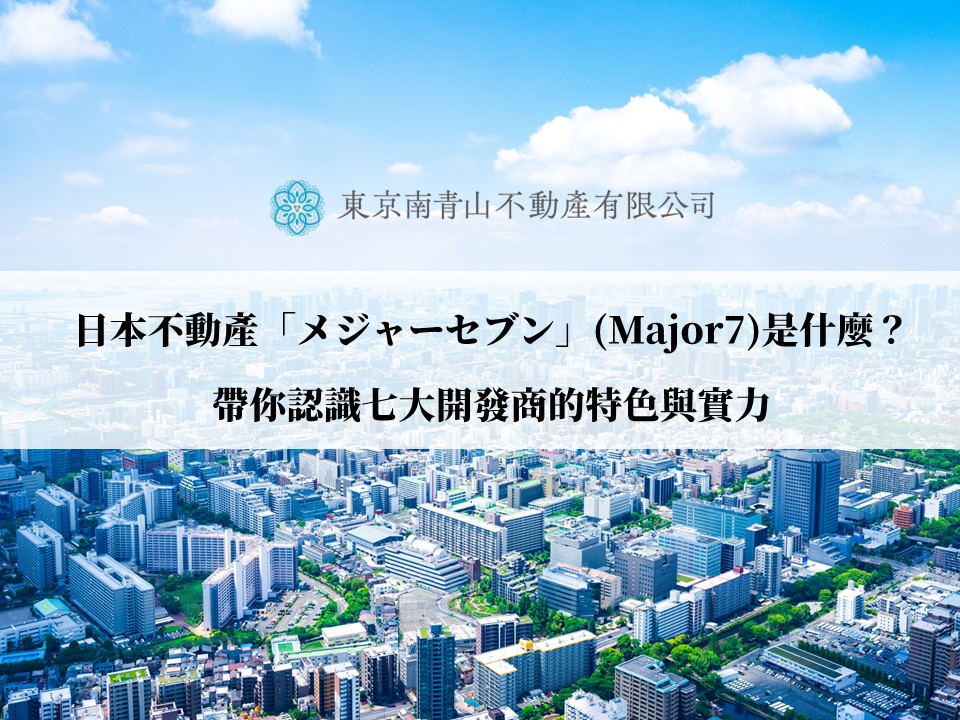Born from the culture of common people during the late Edo period, ‘Edo Kiriko’ flourished significantly during the Meiji era. The term ‘Kiriko’ refers to cut glass, and the captivating sparkle produced by its intricate cuts continues to enchant people both past and present.
Edo Kiriko, which began with glass craftsmen in Edo.
Edo Kiriko originated during the late Edo period, specifically in the fifth year of Tenpo (1834). Legend has it that Kubei Kagaya, a glass craftsman running a beadlo shop in Odenma Town, imitated English cut glass and intricately carved the glass surface using Kongosha. Initially, this delicate artistry was applied to transparent glass. Notably, there is an anecdote that Commodore Perry of the US Navy was captivated by the beauty of a glass bottle crafted by Kagaya during his visit in Kaei 6 (1853).
*1 A word for "glass" in Portuguese.
In the Edo period, craftsmen who made glass were called "beadlo-masters".
*2 It is an abrasive made of natural minerals such as garnet and is also used for blasting and sharpening kitchen knives.
During the Meiji period, Japan witnessed considerable progress in civilization and enlightenment. In 1873, the first glass factory in Japan, the Shinagawa Kogyosha Glass Factory, was established. Additionally, in 1881, British engineer Emmanuel Hauptmann was invited as a cutting instructor, teaching Western-style cutting and carving techniques to over ten Japanese craftsmen. It was during this period that traditional Edo Kiriko glass craft techniques, including the ‘irokise’ method—where colored glass films are applied and cut on transparent glass surfaces—were firmly established and continue to be practiced today.
In the Taisho period, further advancements improved the quality of Edo Kiriko. Research on glass materials and the development of crystal glass polishing techniques contributed to its refinement.
In 1985 (Showa 60), Edo Kiriko was designated as a traditional craft by the Tokyo Metropolitan Government. Later, in 2002 (Heisei 14), it received national certification as a traditional craft. Even today, artisans continue to create various Edo Kiriko products.
To distinguish genuine Edo Kiriko from similar or counterfeit items, the Edo Kiriko Cooperative has established specific criteria for products to be labeled as ‘Edo Kiriko’:
1. The item must be made of glass.
2. It must be crafted by hand.
3. Rotating tools are primarily used during production.
4. The product must originate from the designated area, centered around the Koto Ward in the Kanto region.
The finer the design, the more skill it takes.
Edo Kiriko is renowned for its intricate patterns achieved by delicately cutting the surface of glass, which is approximately 1 mm thick. This traditional Japanese glass art seamlessly blends ancient motifs with modern Western influences, resulting in a captivating and jewel-like appearance when illuminated.
Here, we will introduce the five main steps involved in Edo Kiriko production:
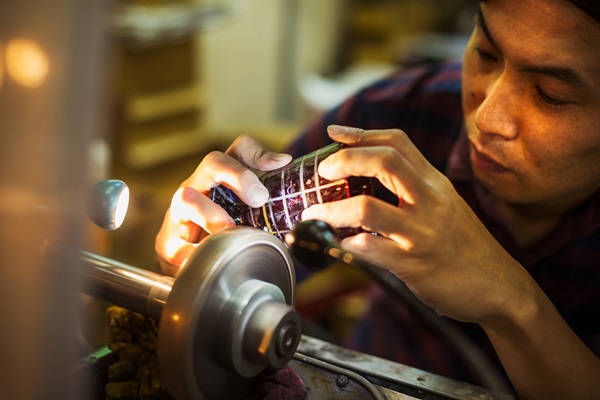
1. “Indexing”
During this step, craftsmen mark lines and dots on the glass surface using markers to guide the subsequent cuts. This process is also known as ‘sumitsuki.
2. "Coarse rubbing"
Along the marked lines, artisans create a rough pattern using a diamond wheel. The diamond wheel, available in abundance sizes and blade shapes, aids in shaping the glass. Interestingly, during the Edo period, Kongo sand and water were used to create patterns by scraping the glass with an iron disk.
3.“Sanban-kake” (Third Cutting)
Using a diamond wheel with finer granularity than the previous step, artisans further refine the cut sections.
4.“Ishikake” (Stone Polishing)
While working with artificial whetstones or natural stones, craftsmen wet the surface and achieve an even smoother finish on the cut glass.
5.“Migaki” (Polishing)
After completing the cuts, the glass surface is polished to enhance its gloss and shine.
The darker the color on the glass surface, the greater the skill required for cutting. ‘Black’ Edo Kiriko is particularly challenging, sometimes taking three times longer than usual due to intricate designs.
What is the meaning behind representative patterns?
The patterns on the surface of ‘Edo Kiriko’ are known as ‘wagara’ and each carries specific meanings, including ‘prosperity of descendants’ and ‘immortality and longevity.’ Here are some representative patterns.
・Rokkaku Kagome and Hakkaku Kagome
These patterns are based on the mesh design of bamboo baskets and have served as protective ‘amulets’ in Japan since ancient times.
・Yarai
Representing an enclosure formed by crossing bamboo, it is believed to safeguard against disasters.
・Hemp leaves
Rapidly growing hemp inspires this pattern, symbolizing the healthy growth of children.
・Chrysanthemum connection
Named for its delicate cuts resembling a chrysanthemum flower, symbolizing “immortality and longevity.”
・Turtle shell
Based on the belief that “a crane lives a thousand years, a turtle ten thousand years,” this pattern is considered auspicious.
・Ichimatsu
Popularized during the Edo period by kabuki actor Sanogawa Ichimatsu, it signifies “prosperity of descendants.”
・Nanako
Named after its fine cuts resembling fish eggs, it conveys the meaning of “prosperity of descendants.”
・Shippo
Derived from the seven treasures in Buddhist scriptures, this “cloisonne crest” symbolizes “harmony” and the value of interconnected circles.
・Spider web
Literally resembling a spider’s web, it is believed to “entangle happiness.”
Hakkakukagome
Kiku tsunagi
Summary
Nowadays, a wide variety of products, including rock glasses and sake cups, are meticulously crafted by skilled artisans, resulting in unique and thoughtfully finished pieces.
What makes Edo Kiriko charming is its ability to evolve while preserving tradition—whether by consistently applying a single pattern or creatively combining multiple patterns.
Each elegantly designed glass provides a special experience every time you enjoy your favorite drink.
When selecting a gift for a celebration, consider choosing a pattern that conveys your heartfelt wishes for the recipient’s happiness.
